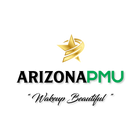best color theory ·
best pmu school ·
color ·
color knowledge ·
color theory ·
free class ·
free color theory ·
free permanent makeup ·
ink ·
pigmentology ·
Color Theory Basic Vocabulary For Beginners
Inks:
- In PMU, inks refer to the mixture used for implanting color into the skin.
- They are a combination of pigments, dyes, and a carrier solution that ensures the color can be applied smoothly.
- The carrier solution often contains substances like glycerin, alcohol, or distilled water.
- Dyes are usually organic compounds that are soluble in the carrier liquid.
- They can provide a range of colors but may not always be stable over long periods, which can lead to fading or color changes in the skin over time.
- Dyes are less commonly used in PMU inks because they are not always approved for cosmetic use due to safety concerns.
- Pigments are insoluble colorants that are suspended in the carrier liquid.
- They are the primary source of color in PMU inks and tattoos, providing a stable and lasting color.
- Pigments are generally preferred over dyes for their longevity and stability.
Particle:
- An entity characterized by specific chemical and physical attributes such as volume, density, and mass.
Aggregates:
- Structures formed by the union of multiple particles through electrostatic forces, creating larger complexes.
Agglomerates:
- Composites of particles and aggregates bonded by electrostatic interactions.
Dye:
- A coloring agent, either organic or inorganic, that saturates a material and imparts color to its entire mass. Dyes are soluble in their mediums, contrasting with the insolubility of pigments.
Cosmetic Bases:
- These are the carriers and additives in tattoo and PMU inks, such as water, alcohol, glycerin, isopropyl alcohol, hyaluronic acid, and witch hazel extract.
COLOR INDEX (CI)
A standardized nomenclature for dyes and pigments maintained online. Each dye or pigment is given a unique five-digit CI number, which is indicated on product labels.
COLORANTS: ORGANIC AND INORGANIC
The collective term for both dyes and pigments, classified as colorants to systematize substances by numerical value.
Classification:
- Organic colorants: CI numbers from 11000 to 74999.
- Inorganic colorants: CI numbers from 77000 to 77999.


Leave a comment